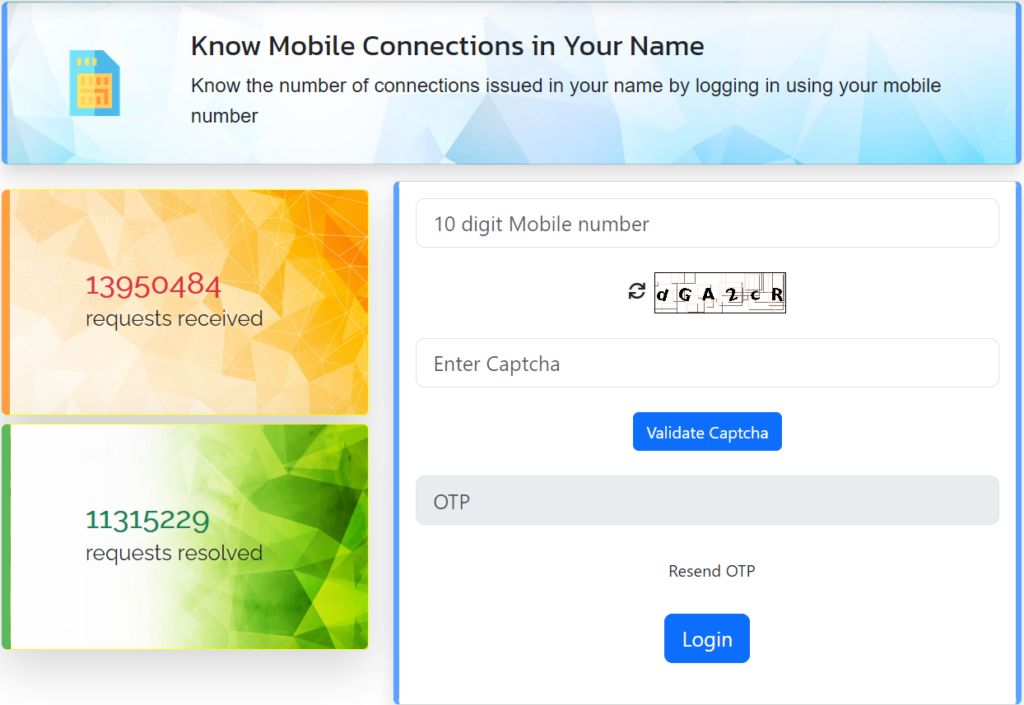Nowadays mobile phones have become an indispensable part of everyday life. However, with the widespread adoption of SIM cards, fraudsters have also found ways to deceive vulnerable users through various illegal SIM-related scams. These scams can result in financial loss, identity theft, and unlawful use of a person’s information. Thankfully, the TAFCOP portal assists in curbing these threats to strengthen users’ hands.
In this article, we have discussed some of the common SIM-related scams, along with the role TAFCOP plays in combating them.
What Are the Common SIM-Related Scams?
Con artists use various means to scam SIM card users. One such classic scam is SIM Card Swapping, whereby the con artists impersonate the original user and mislead the telecom provider into issuing a duplicate SIM on behalf of that victim. With the fraudsters now in possession of this new SIM, they will intercept one-time passwords (OTPs) and other sensitive information, ultimately undertaking unauthorized transactions and data breaches.
Another commonly observed scam is obtaining SIM cards by creating a clone of the scammer. Call interception is achieved here, where they dictate their terms with the recipient. This sort of criminal act leads to serious security breaches, including unauthorized access to bank accounts and personal information.
Another classic form of fraud is Fake SIM Registration, where they are obtained with fake or stolen identity documents, mostly for criminal activities like phishing, blackmailing, and cyber fraud. SIM Jacking or SIM Hijacking is when hackers gain access to the user’s phone number through means of social engineering or malware, which allows a complete takeover of a user’s social media accounts, banking services, and other sensitive platforms.
Another problem is Multiple SIM Misuse, where fraudsters issue SIM cards under someone else’s name without their knowledge. These unauthorized SIMs are often used for illegal activities, putting innocent individuals at risk.
How Does TAFCOP Help in Preventing SIM-Related Scams?

The TAFCOP (Telecom Analytics for Fraud Management and Consumer Protection) portal was launched by the Department of Telecommunications (DoT) of India for the benefit of individuals who wish to track and manage SIM cards registered in their name. This portal also enables the users to check the number of SIMs and those linked to their Aadhaar-associated mobile number so that the person can know their fraudulent connections and report them. If a user finds an unrecognized SIM card linked to their name, they can report it through TAFCOP. The system will then flag and deactivate any fraudulent SIMs, preventing their misuse.
Additionally, TAFCOP plays a crucial role in preventing SIM Swapping and Cloning by notifying users whenever a new SIM is issued under their identity. The actual reason for the impending action by a person is the ability of this portal to alert him/her of suspicious activity. Also, another advantage of this portal is to reduce the phenomenon of fake SIM card registration. Compliance with the strict verification procedures necessitated by telecom operators before issuing new SIMs would significantly mitigate fraudsters’ opportunities to procure SIM cards under false identities. TAFCOP is not just a deterrent to fraud but educates users about scams relating to SIM cards and the measures they can take to protect themselves. Users can dynamically track their active SIMs and take corrective actions against fraud.
How to Use the TAFCOP Portal?
Using the TAFCOP portal is simple and user-friendly. To check and manage your SIM registrations, visit the official TAFCOP website and enter your mobile number. An OTP will be sent for verification. Once verified, you will see a list of all active SIMs registered under your identity. If you find any unknown numbers, you can mark them for deactivation or further inquiry.
Tips to Protect Yourself From SIM-Related Scams
In addition to TAFCOP, several other measures should be adopted to protect oneself from SIM-related fraud. Firstly, keep your mobile number secure and do not share it in public or with strangers. Secondly, two-factor authentication (2FA) should be activated on all important accounts so that unauthorized access will not be allowed.
Further, stay alert while monitoring bank statements and other accounts to spot any suspicious activity concerning your mobile. Stay away from phishing attempts by never sharing OTPs with anyone and for that matter, any confidential information. The moment you find out that your SIM card is missing, call your telecom provider and report it so that they can block it from any unauthorized misuse.
What to Do If You Are a Victim of SIM Fraud?
If someone suspects they may have been a victim of a SIM-related scam, the first action should be to contact their telecom provider immediately and request that the compromised SIM card be blocked immediately. Next, they should register a complaint with the cyber crime portal or contact local police authorities to file a report and assist in the investigation of the SIM-related scam. Also, change passwords and security settings of all your main accounts such as banking, emailing, and social networking. Monitor your bank accounts for unauthorized transactions, and inform the bank if needed. Finally, please refer to the TAFCOP portal to identify unauthorized SIM cards under your name and make a report of them.
Conclusion
SIM-related scams are on the rise, but with proper awareness and the TAFCOP portal, users can protect themselves from fraud. By regularly checking the SIMs registered under their name and following security measures, individuals can prevent financial frauds and identity theft.
If you haven’t already, visit the TAFCOP portal today to ensure the security of your mobile number and protect yourself from SIM-related scams.